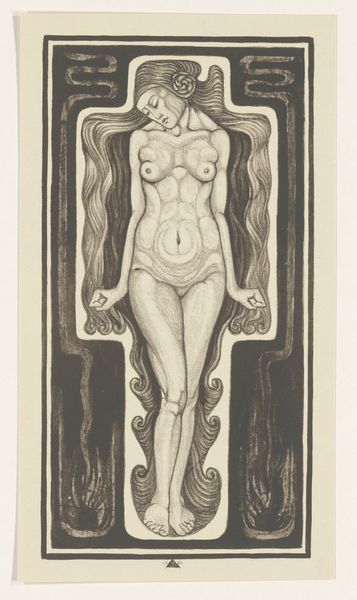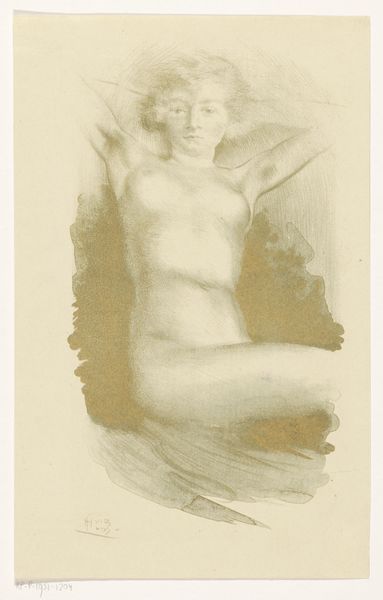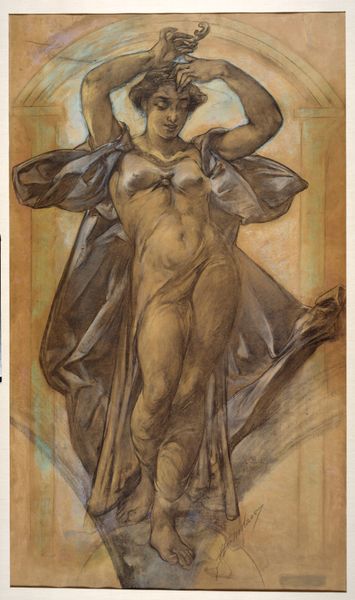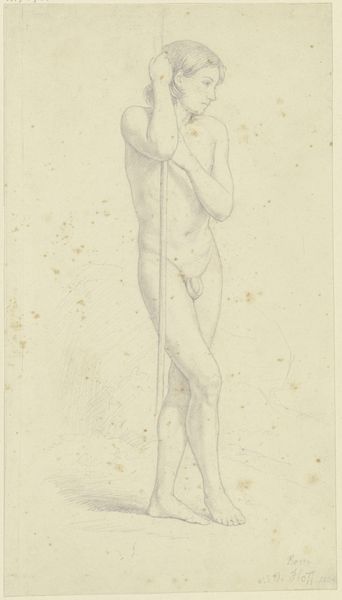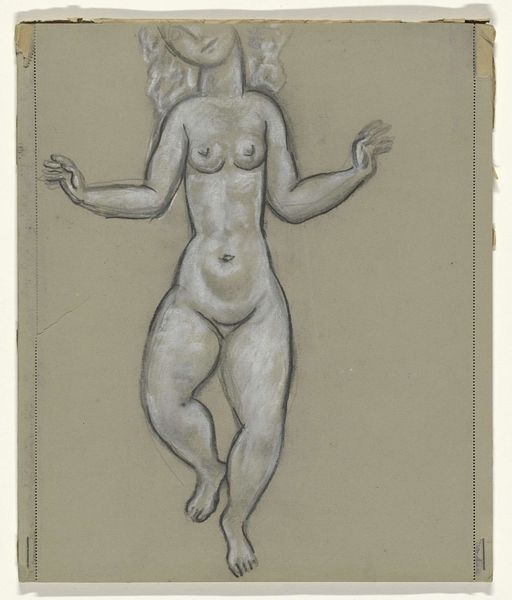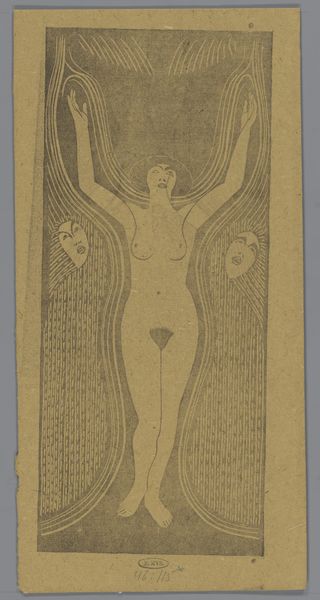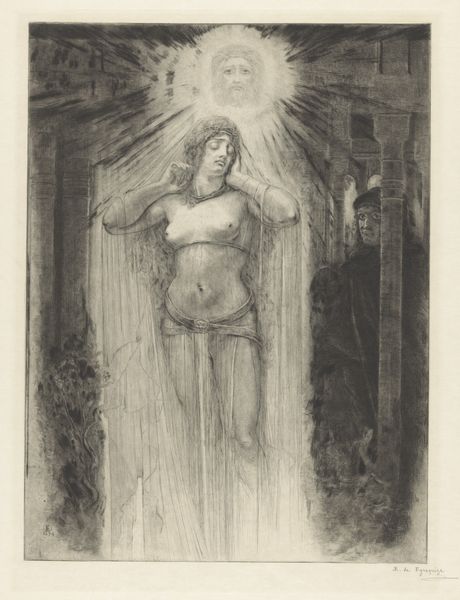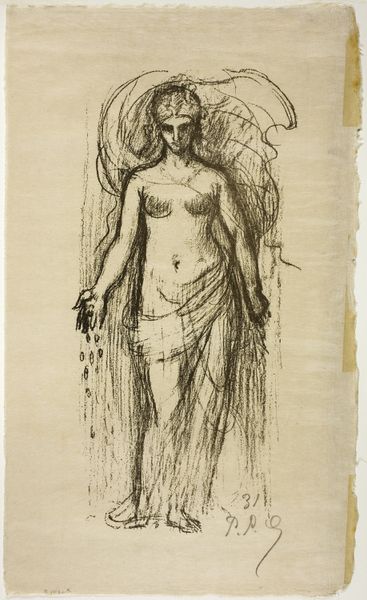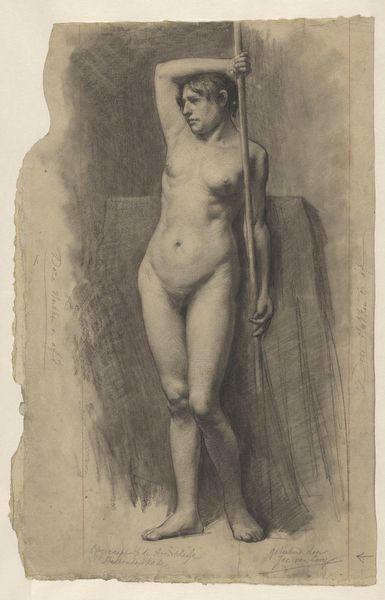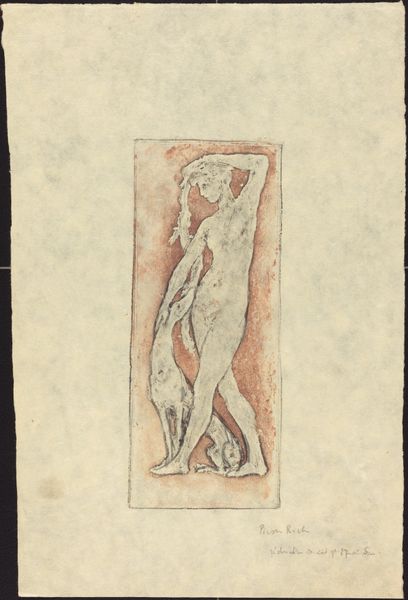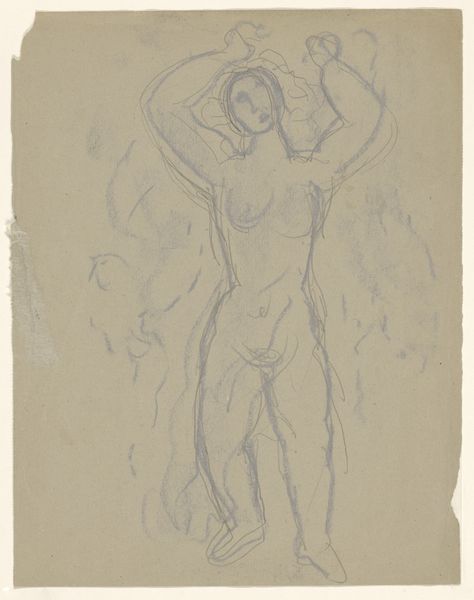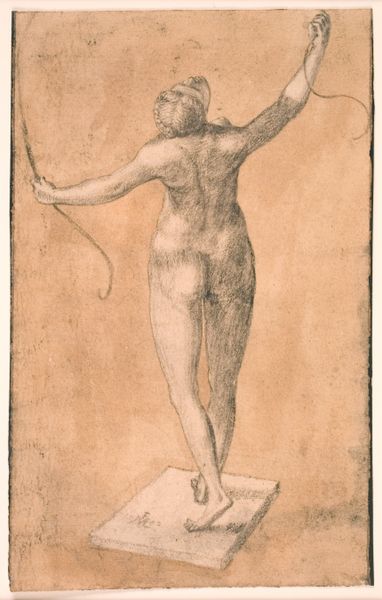
#
toned paper
#
pen sketch
#
pencil sketch
#
cartoon sketch
#
personal sketchbook
#
ink drawing experimentation
#
pen-ink sketch
#
pen work
#
sketchbook drawing
#
sketchbook art
Dimensions: height 137 mm, width 47 mm
Copyright: Rijks Museum: Open Domain
Editor: We're looking at "Naakte vrouw met spiegel en een weegschaal," a sketch done before 1916 by Bernard Willem Wierink, currently held at the Rijksmuseum. I'm struck by its somewhat surreal combination of classical allegory and this almost unfinished quality of a personal sketchbook page. What stands out to you? Curator: Well, first, I’m immediately drawn to the symbols – the naked woman, the mirror, the scales. Justice, naked Truth laid bare before judgment. It places this sketch within a very specific artistic and socio-political lineage. Now, what context might have shaped Wierink's perspective at this time, pre-1920 in the Netherlands? Consider what political or social reform movements are happening at the time? Editor: I guess it's interesting to see these traditionally gendered ideas of justice embodied in the female nude form like this. But also, it is such a small work in a simple medium. It is hard to get the true sense of place in art. Curator: Exactly. Its size and execution—on what appears to be toned paper with pen and pencil—suggests intimacy and perhaps experimentation. It's not a finished work intended for grand display, which affects our understanding. Was this, for example, an artist involved with debates of access and the democratisation of art spaces? How might that position manifest itself in this work? Editor: That's a fascinating point. Maybe it’s questioning established modes of displaying this type of imagery or thinking of something more subversive. A challenge of a certain academic mode? Curator: Perhaps. Thinking about who gets represented in a museum setting, and how? Whose bodies and what concepts get the monument treatment and which remain hidden or 'sketchy'. Do we also have to look at museums’ history as a means of shoring up colonial ideology? Editor: Wow, I didn’t see so much embedded in a simple sketch! Now, I feel like there's much more for me to go and explore. Thanks so much! Curator: Likewise! Considering the institutional framing helps re-evaluate the artwork on a very different axis.
Comments
No comments
Be the first to comment and join the conversation on the ultimate creative platform.
